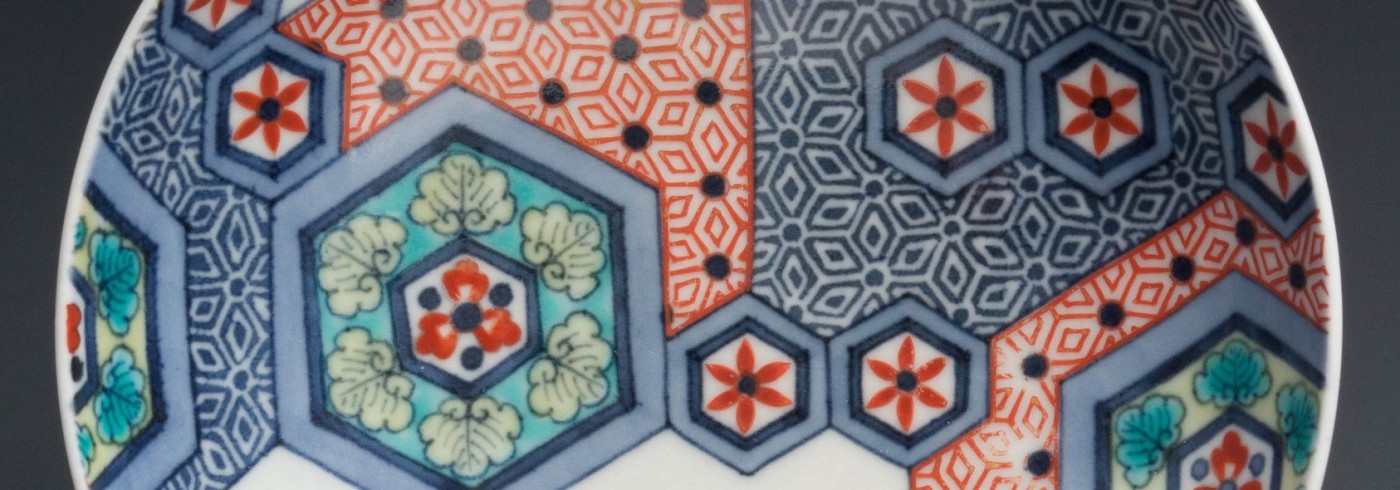
Hizen, Nabeshima official kiln (1670 - 1700 circa)

Porcelain decorated with cobalt blu underglaze and polychrome enamels on glaze
Diameter 15 cm
Nabeshima ware was made at Okawachi near Arita in Kyushu (Japan) under the authority of the Nabeshima samurai clan. The feudal lords of Nabeshima were so proud of their technological skill, that throughout the Edo period (1615-1867) they gave porcelain (and swords) as presents to the lords of other provinces.
Most of Nabeshima porcelain were made between the Enpou era (1673-1681) and around 1750 have been colored with four colors; red, blue, green, yellow, and the designs were adopted from plants or patterns on kimonos. The designs combine pattern and empty space in pure Japanese style and often resemble the bold and sophisticated textile designs of the late seventeenth and eighteenth centuries. In this particular case the dish is decorated with a fine geometrical design inspired by textile patterns. The result is a unique composition characterized by an extremely elegant line which taste anticipates the modern design.
The decoration is an unicum and there are no other similar items recorded.
The exterior, as typical of Nabeshima dishes, is decorated with three groups of shippo-tsunagi (japanese tied cash), and a combed design on the high foot.
SKU: alt1003
